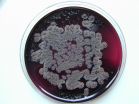(Press-News.org) Cardiac surgery patients may be at risk because of the decision by Health Canada and the European Medicines Agency to reintroduce the use of aprotinin after its withdrawal from the worldwide market in 2007, assert the authors of a previous major trial that found a substantially increased risk of death associated with the drug. In an analysis in CMAJ (Canadian Medical Association Journal), the authors refute three major criticisms of the trial made by the regulatory bodies.
Aprotinin, used to control bleeding in cardiac surgery, was withdrawn worldwide in 2007 after the early termination of the Blood Conservation Using Antifibrinolytics in a Randomized Trial (BART), which showed an increase in risk of death for cardiac patients on the drug. The results of the BART trial were published in the New England Journal of Medicine in 2008.
"This analysis is about setting the record straight and refuting the inaccurate and unclear criticisms made against the BART trial regarding the way it was conducted and its final results reported," says Dean Fergusson, senior scientist and director of the Clinical Epidemiology Program at the Ottawa Hospital Research Institute and a professor at the University of Ottawa. "We want to reassure all those involved in BART, including physicians, nurses, patients and families, that it was a pivotal, well-designed and well-conducted trial."
Aprotinin is still unavailable for use in the United States.
"We consider that the prudent regulatory response to uncertainty would have been to mandate a second large trial comparing aprotinin to an active agent to either refute or confirm results from the BART," the authors conclude.
INFORMATION:
Decision to reintroduce aprotinin in cardiac surgery may put patients at risk
Authors of BART study concerned over actions of Canadian, European regulatory bodies
2014-09-29
ELSE PRESS RELEASES FROM THIS DATE:
Revolutionary hamstring tester will keep more players on the field
2014-09-29
Elite sporting stars can assess and reduce their risk of a hamstring injury thanks to a breakthrough made by QUT researchers.
The discovery could be worth a fortune to football codes, with hamstring strain injuries accounting for most non-contact injuries in Australian rules football, football and rugby union, as well as track events like sprinting.
Using an innovative field device, a research team led by Dr Anthony Shield, from QUT's School - Exercise and Nutrition Sciences, and former QUT PhD student, Dr David Opar, now at the Australian Catholic University, measured ...
Drug for kidney injury after cardiac surgery does not reduce need for dialysis
2014-09-29
Among patients with acute kidney injury after cardiac surgery, infusion with the antihypertensive agent fenoldopam, compared with placebo, did not reduce the need for renal replacement therapy (dialysis) or risk of death at 30 days, but was associated with an increased rate of abnormally low blood pressure, according to a study published in JAMA. The study is being posted early online to coincide with its presentation at the European Society of Intensive Care Medicine annual congress.
More than 1 million patients undergo cardiac surgery every year in the United States ...
Climate detectives reveal handprint of human caused climate change in Australia
2014-09-29
Australia's hottest year on record in 2013 along with the accompanying droughts, heat waves and record-breaking seasons of that year was virtually impossible without the influence of human-caused global warming.
New research from ARC Centre of Excellence for Climate System Science (ARCCSS) researchers and colleagues, over five different Australian papers in a special edition of the Bulletin of the American Meteorological Society (BAMS), has highlighted the powerful influence of global warming on Australia's climate.
"We often talk about the fingerprint of human-caused ...
Rising prevalence of sleep apnea in US threatens public health
2014-09-29
DARIEN, IL – Public health and safety are threatened by the increasing prevalence of obstructive sleep apnea, which now afflicts at least 25 million adults in the U.S., according to the National Healthy Sleep Awareness Project. Several new studies highlight the destructive nature of obstructive sleep apnea, a chronic disease that increases the risk of high blood pressure, heart disease, Type 2 diabetes, stroke and depression.
"Obstructive sleep apnea is destroying the health of millions of Americans, and the problem has only gotten worse over the last two decades," said ...
Targeted combination therapy halts disease, extends life in advanced melanoma patients
2014-09-29
A world-first study in today's New England Journal of Medicine heralds the efficacy of a targeted combination drug therapy after reporting major declines in the risk of disease progression and death in people with metastatic melanoma.
The multi-centre, double-blind, randomised, phase 3 trial compared oral dabrafenib (150 mg twice daily) and oral trametinib (2 mg once daily) combination therapy with oral dabrafenib (150 mg twice daily) and placebo.
All trial patients had inoperable stage 3C or 4 metastatic melanoma that had a BRAF gene mutation V600E or V600K. Among ...
Investigating the 'underground' habitat of Listeria bacteria
2014-09-29
The literature describes Listeria as ubiquitous bacteria with widespread occurrence. Yet they only become a problem for humans and animals when they contaminate food processing facilities, multiply, and enter the food chain in high concentrations. An infection with Listeria monocytogenes can even be fatal for humans or animals with weakened immune systems.
Listeria in soil or water are not dangerous
"Listeria in soil or water represent a relatively low risk to humans," explains study director Beatrix Stessl. "The concentrations are too low. The aim of our study was ...
Trial shows trastuzumab should remain as standard of care for HER2-positive breast cancer
2014-09-29
JACKSONVILLE, Fla., Sept. 29, 2014 — Analysis of more than 8,000 women who participated in the world's largest study of two treatments for HER2-positive breast cancer reinforces other findings from the clinical trial showing that trastuzumab (Herceptin) should remain the standard of care for this cancer, says a Mayo Clinic researcher.
This study, being presented at the European Society for Medical Oncology (ESMO) 2014 Congress in Madrid, reveals that when used as a single HER2-targeted therapy in addition to standard chemotherapy, trastuzumab offers a better outcome than ...
Tooth serves as evidence of 220 million-year-old attack
2014-09-29
At the beginning of the age of dinosaurs, gigantic reptiles—distant relatives of modern crocodiles—ruled the earth. Some lived on land and others in water and it was thought they didn't much interact. But a tooth found by a University of Tennessee, Knoxville, researcher in the thigh of one of these ancient animals is challenging this belief.
Stephanie Drumheller, an earth and planetary sciences lecturer, and her Virginia Tech colleagues Michelle Stocker and Sterling Nesbitt examined 220-million-year-old bite marks in the thigh bones of an old reptile and found evidence ...
A molecular mechanism involved in cellular proliferation characterized
2014-09-29
Researchers from Guillermo Montoya's team at the Spanish National Cancer Research Centre (CNIO), in collaboration with Isabelle Vernos' Group from the Centre for Genomic Regulation (CRG), have uncovered the molecular interaction between TACC3 and chTOG, key proteins in forming the internal cellular framework that enables and sustains cell division. Published today in Nature Communications, the observations may help to optimise current oncological therapies specifically designed to fight against this framework, named by the scientific community as microtubules.
KEY MOLECULES ...
New method to motivate students to reduce energy consumption
2014-09-29
The research found that a combination of a real-time feedback system together with a human energy delegate in eight halls of residence resulted in a reduction of 37% in energy consumption when compared to normal consumption. The savings were 1360.49 kWh, which is equivalent to a reduction of 713.71 kg of CO2 over four weeks.
In contrast, another eight halls, exposed only to the real-time feedback and a weekly email alert, resulted in saw a 3.5% reduction in energy consumption.
Student's energy-use behaviour is complex as they cannot easily identify how much electricity ...
LAST 30 PRESS RELEASES:
Numbers in our sights affect how we perceive space
SIMJ announces global collaborative book project in commemoration of its 75th anniversary
Air pollution exposure and birth weight
Obstructive sleep apnea risk and mental health conditions among older adults
How talking slows eye movements behind the wheel
The Ceramic Society of Japan’s Oxoate Ceramics Research Association launches new international book project
Heart-brain connection: international study reveals the role of the vagus nerve in keeping the heart young
Researchers identify Rb1 as a predictive biomarker for a new therapeutic strategy in some breast cancers
Survey reveals ethical gaps slowing AI adoption in pediatric surgery
Stimulant ADHD medications work differently than thought
AI overestimates how smart people are, according to HSE economists
HSE researchers create genome-wide map of quadruplexes
Scientists boost cell "powerhouses" to burn more calories
Automatic label checking: The missing step in making reliable medical AI
Low daily alcohol intake linked to 50% heightened mouth cancer risk in India
American Meteorological Society announces Rick Spinrad as 2026 President-Elect
Biomass-based carbon capture spotlighted in newly released global climate webinar recording
Illuminating invisible nano pollutants: advanced bioimaging tracks the full journey of emerging nanoscale contaminants in living systems
How does age affect recovery from spinal cord injury?
Novel AI tool offers prognosis for patients with head and neck cancer
Fathers’ microplastic exposure tied to their children’s metabolic problems
Research validates laboratory model for studying high-grade serous ovarian cancer
SIR 2026 delivers transformative breakthroughs in minimally invasive medicine to improve patient care
Stem Cell Reports most downloaded papers of 2025 highlight the breadth and impact of stem cell research
Oxford-led study estimates NHS spends around 3% of its primary and secondary care budget on the health impacts of heat and cold in England
A researcher’s long quest leads to a smart composite breakthrough
Urban wild bees act as “microbial sensors” of city health.
New study finds where you live affects recovery after a hip fracture
Forecasting the impact of fully automated vehicle adoption on US road traffic injuries
Alcohol-related hospitalizations from 2016 to 2022
[Press-News.org] Decision to reintroduce aprotinin in cardiac surgery may put patients at riskAuthors of BART study concerned over actions of Canadian, European regulatory bodies



